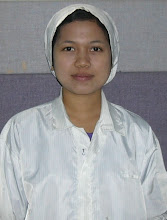Most breast rashes are a type yeast infection. Yeast is everywhere. It's all around us including on our skin, in the air we breathe and on our clothing. It normally does not cause us many problems or issues, but under the right set of circumstances it will make our life very difficult and uncomfortable. For a breast rash to form the yeast needs three ingredients to help it gain a foothold on our bodies. It needs moisture, heat, and darkness. Take away just one of those items and there will not be a rash.
The question is how to remove one or more of the breast rash ingredients. It is not practical to expose the underside of the breast with bright lighting. It is not only inappropriate to walk or drive around topless it's also unlawful. Imagine the traffic accidents that would occur when a woman walks topless down the sidewalk. Heat is another item that is difficult to remove. Ice packs under the breast do not fit well with most women's fashion ideas. That leaves moisture. People sweat when it gets warm. That's how the body's natural cooling mechanism works. But of the three major elements needed to form a breast rash, moisture is the easiest and most realistic to control.
Keeping the breasts dry is not a simple task, but there are many things a woman can do to manage sweat. There are also many things she should not do. Common sense is the key. If proper moisture control methods are used on a daily basis a dry breast is possible.
The first thing to do is make sure your bra fits properly. It has been estimated that more than seventy-five percent of woman wear an improperly sized bra. If the bra is tight the sweat will be doubly trapped against the breasts. If the bra is loose the chafing action will help the rash take hold more quickly.
Wear a clean bra. Sweat, dirt, bacteria, and yeasts will collect in a bra. Dress comfortably and wear loose fitting clothes. Loose fitting clothes will allow moisture to evaporate.
Change your blouse and bra as quickly as practical if they get wet. Clean and dry before putting on fresh clothes. Do not remain in wet swimwear. A rash can form in hours. Change as quickly as possible into something light after swimming or after strenuous physical activity.
Bathe as often as is practical. A cool bath will help lower the body's core temperature and temporarily reduce the amount of sweat. Keeping the breasts clean will help prevent the yeast from multiplying by temporarily removing it. Drying off completely is very important. Use of an electric blow dryer on a cool setting is a good idea.
Lift your breasts several times a day to allow air to circulate under them. This is not impractical. It can be done in the privacy of a restroom at work, at the shopping mall, or in a restaurant. If time permits use a wet wipe to clean them. Remember to dry completely.
Keep an electric fan handy. Take a fan to work if permitted. When you're driving keep the AC vents turned to the chest area. A 12 volt miniature fan works great in the car.
There are things that you should not do. Many women use cornstarch under their breasts for moisture control. Cornstarch will absorb sweat. But it is a food and by using it under the breasts you'll be providing a breeding ground for yeast and bacteria. A lot of baby powders contain cornstarch. If you want to use powder make sure that it is talc based.
Do not use antiperspirants or any other chemical agent on delicate breast skin. Deodorants and the like were developed to be placed under the arms. Not under a woman's sensitive breasts. Chemicals could cause an allergic reaction and a rash could appear that is not moisture related.
In the summer season it's not always possible to prevent a rash from forming but by using common sense as your guide you will be comfortable. Moisture control is the solution to breast sweat. Keep as dry as possible.
About the Author. Kathryn is an advocate of breast health awareness including prevention of breast rashes, breast sweat control, self breast examinations, and providing useful information and facts on breast enhancement and firming exercises.


